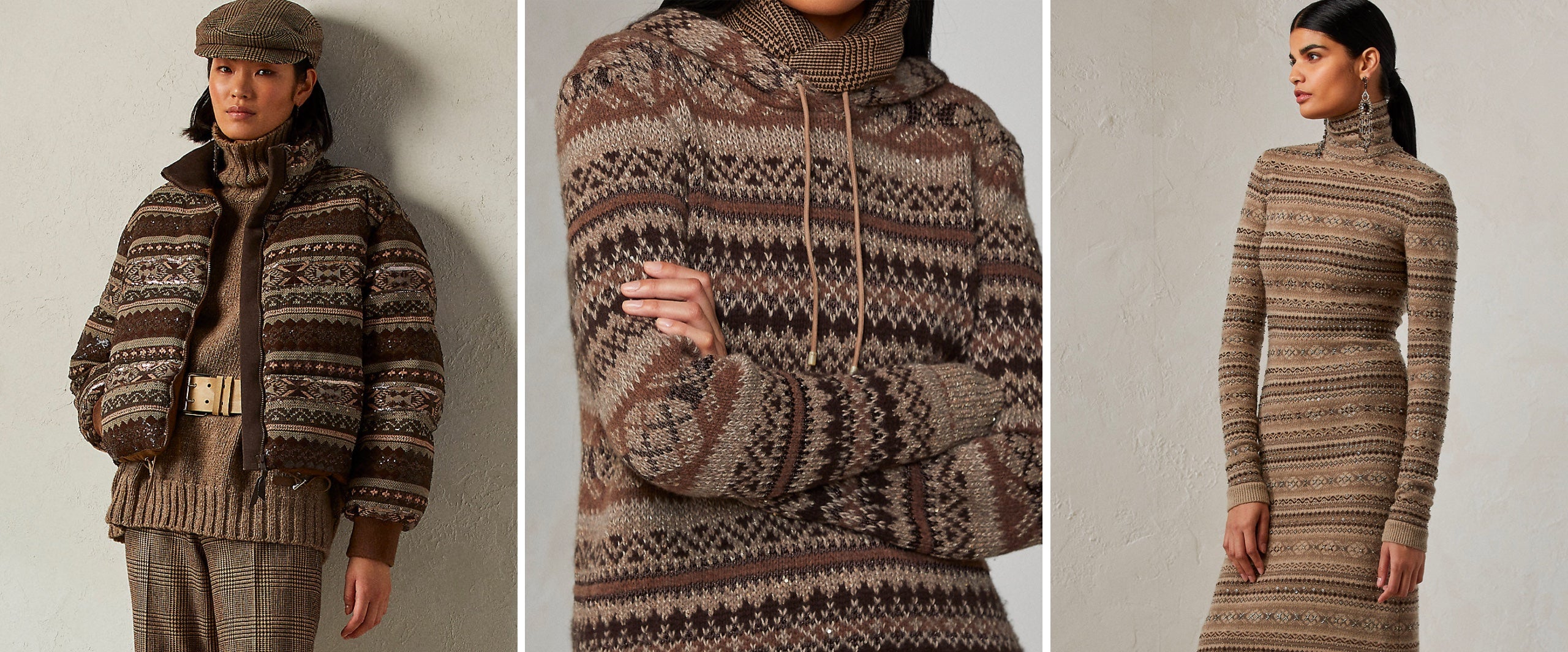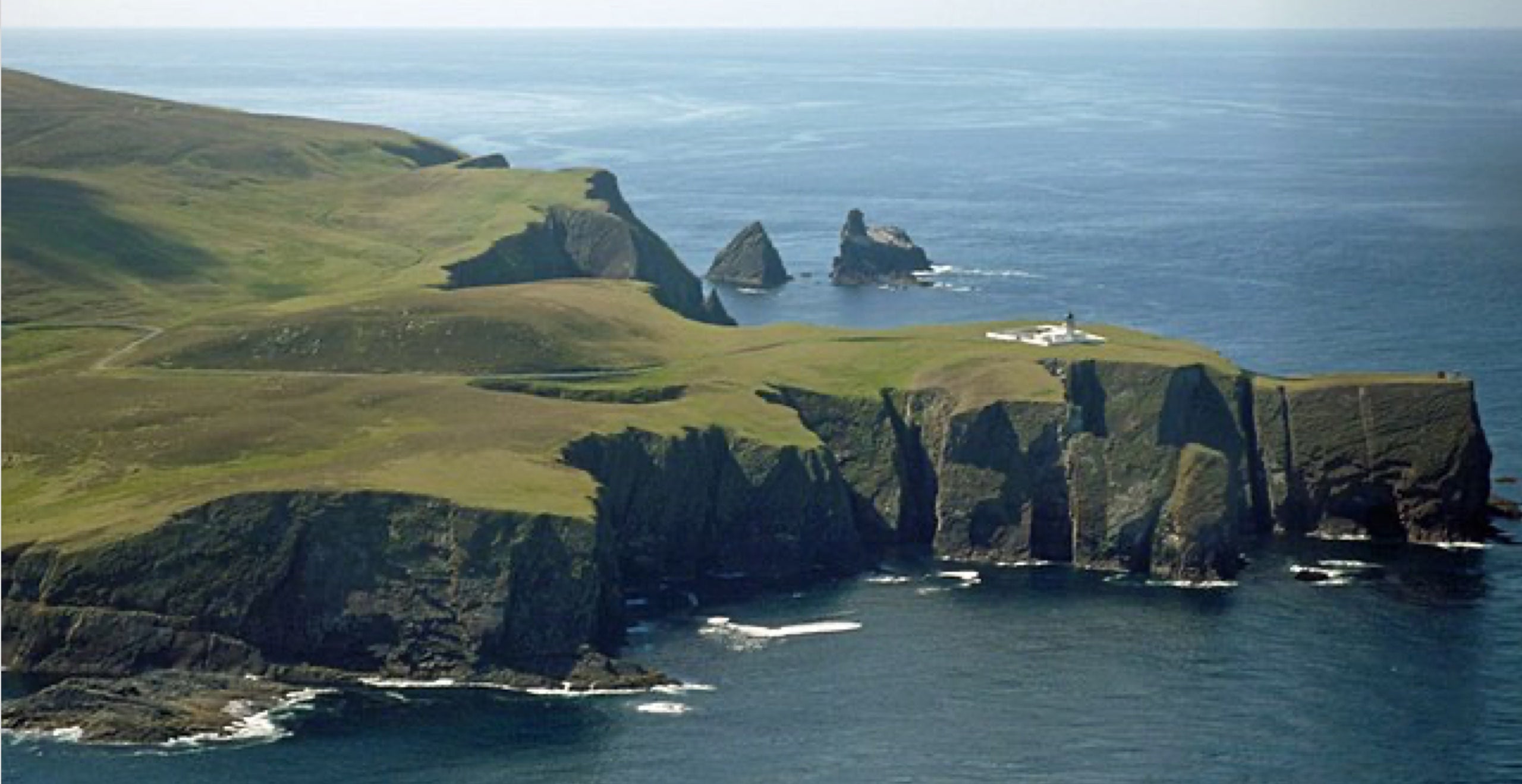
Pattern Play
First woven on a remote Scottish island centuries ago, fair isle remains a unique source of sartorial inspiration for Ralph LaurenTime-honored and cozy; classic and playful, the spirited Fair Isle motif reappears every fall and adds visual interest to cold weather looks. Associated with royals, the blustery character of Scottish living, and the legacy of Ralph Lauren, the garment has for decades demonstrated cheeky and versatile potential—from quintessential British style to red carpet looks at the Sundance Film Festival.
The knit pattern gets its name from a remote, 3-square-mile land mass that is part of Scotland’s Shetland Islands. As part of a major shipping route between Europe and the United States, Fair Isle has a knitting history that dates back to the 1600s. While men were at sea, women innovated knitting techniques for the sweaters their husbands and fathers wore while fishing. The signature pattern named for their island was characterized by horizontal layers of colorwork designs that included crosses, diamonds, stars, and geometric shapes. Two colors were used per row; typically executed in red, blue, orange, brown, and purple.

The knitwear became part of the bartering economy with passing ships, who carried the sweaters and, as a result, the distinctive pattern to new countries throughout the early 20th century. In 1921, the style’s popularity solidified when Edward VIII, then the Prince of Wales, wore one as he stood for a portrait with his dog. The generation-spanning style has been spotted on royals and cultural icons ever since: on a 19-year-old Princess Diana—then Diana Spencer—leaning against a country bench in a bright V-neck sweater, which she paired with brown corduroys and green hunter boots; Queen Elizabeth II at Balmoral Castle, and Paul McCartney, who wore a Fair Isle vest while The Beatles filmed the 1967 television musical Magical Mystery Tour.

Stateside, Ralph Lauren was one of the first to get excited about the pattern, incorporating it into his collections in more relaxed, unexpected ways. In the brand’s quest to reimagine classic pillars of traditional dressing, he sought to recast the style anew. In 1992, Mr. Lauren told New York Magazine, of the pieces he resurrected: “It was familiar; a part of our culture, but you couldn’t buy it. A tweed hacking jacket? You couldn’t get it anymore. Fair Isle sweaters? I had to search out home knitters in England.”

Part of the look’s appeal—one that exists today in eye-catching streetwear, holiday dressing, and those who flock to Deer Valley, St. Moritz, and Aspen—is in its potential when paired with odd bedfellows. Fair Isle pops against neutral whites and denims, but it’s equally ideal for layering over a brightly colored oxford or turtleneck, mixing with bold textures, like calfskin, corduroy, and tweed, and combining with other bright and busy patterns.
As a designer, Ralph Lauren saw potential for the archetypal Scottish garment to be repurposed in a variety of modern ways. Style magazine noted in 1994: “The simple fact that he has broken down barriers by combining ethnic prints with cashmere turtleneck, denim with Fair Isle, and cowboy boot with crocodile loafers, has meant Lauren has avoided the snobbery and pseudo sophistication that often accompanies the high-fashion world.” Indeed, for its storied history and idiosyncratic appeal, Fair Isle is perhaps best considered a neutral; ready to do the eye-catching work in a number of contexts and looks.

- @ Ralph Lauren Corporation
- Courtesy of Getty






